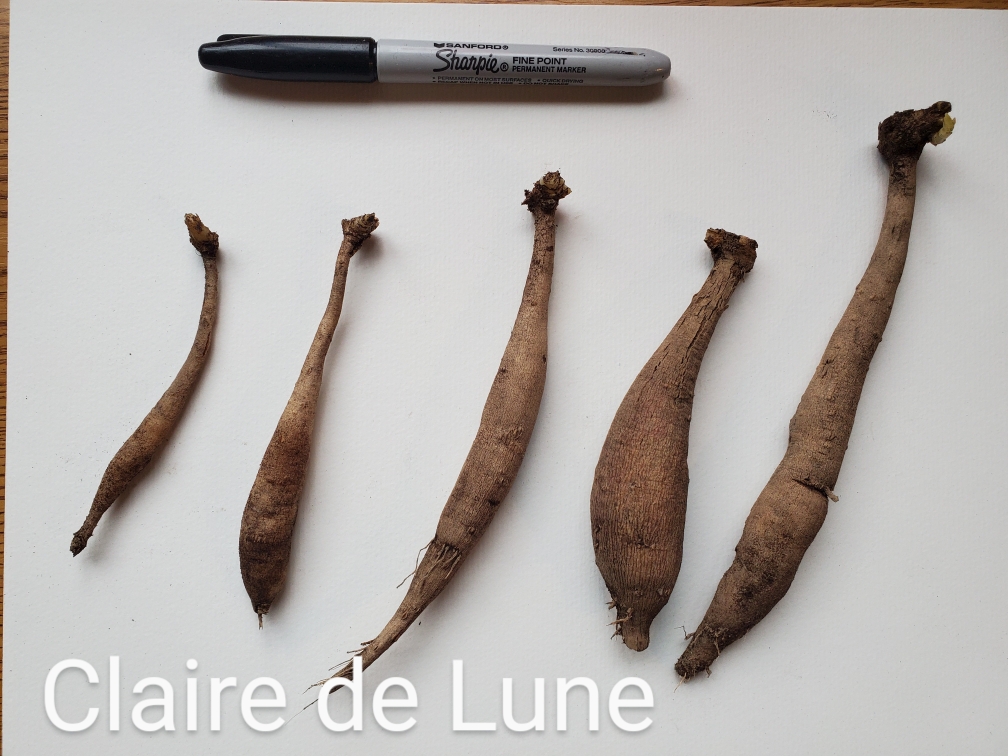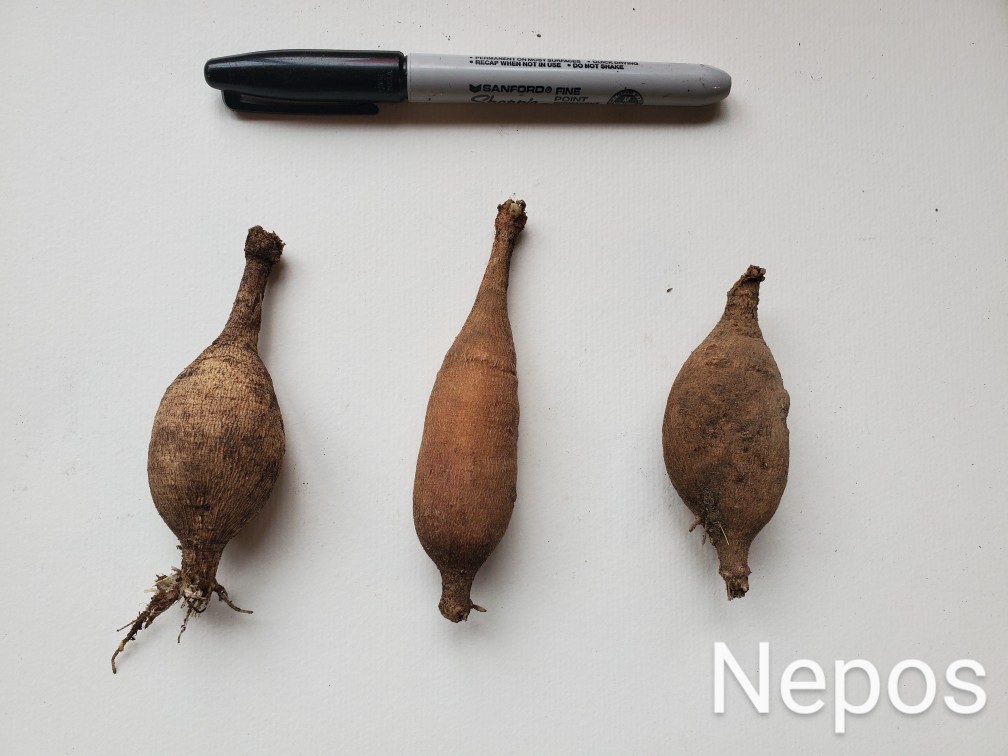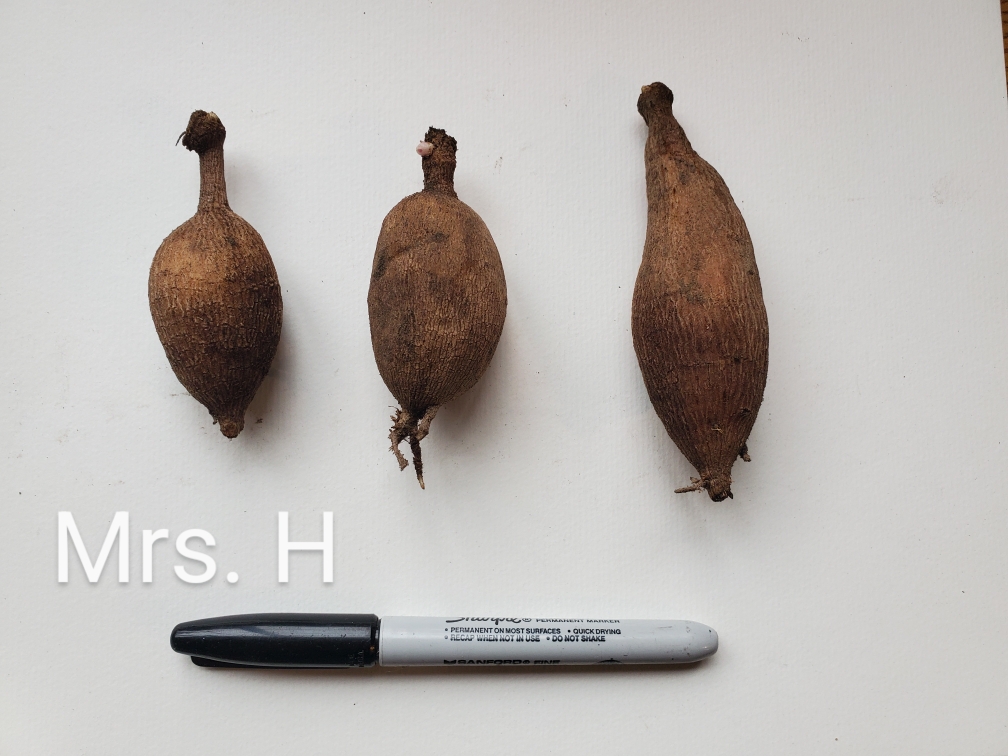
As you may have guessed, we love growing dahlias for their diverse colors and forms and the way they close the gardening season with beauty and abundance, and we want to share some of our experiences and observations with those of you who may be trying them for the first time. Unlike the bulbs you may be used to from tulips or daffodils which have a standard or regular form, dahlia tubers - and especially heirloom dahlia tubers - can come in a wide array of shapes, sizes, and forms. Depending both on what variety they are and on how they were grown, tubers may be like golf balls, compact and rounded, or like enlarged string-beans, long and skinny, sometimes curved, sometimes straight, and anything in between. We examine each tuber and only send ones that we expect will grow and bloom well for you, so don’t be alarmed by their size or shape on arrival.

Some varieties like ‘Lutt Wichen’, ‘Claire de Lune’ and ‘Union Jack’ tend to be “shy” producers of tubers, with fewer or smaller daughter tubers, and these are often the ones that drop out of mainstream commerce. At Old House Gardens we try to keep such historic varieties from disappearing altogether, even if it means that you are more likely to start with a small tuber than when you buy a modern variety. But please don’t worry that it won’t grow well just because it’s small. The tuber only has to provide enough energy and nutrients to enable the plant to put down roots, send up its first leaves, and start to fend for itself, so (like flower seeds) a small tuber can produce a large plant. We (and our customers) have found that tubers with the volume of our little fingers (or a triple-A battery) are big enough to get plants off to a good start.

Other variability comes from how the dahlia was propagated. Large-scale growers in the Netherlands use “pot-culture” which produces scruffy clusters of tubers, sometimes with necks that have been broken as they were washed or handled. You only need one to grow, so many people just cut off the ones that are dangling by a thread or two and only plant the remainder. On the positive side, these are often more affordable since they’re grown in higher volume. Small-scale growers (like ourselves and our American partners) typically dig and divide their dahlia clumps by hand, resulting in neatly trimmed and tidy single tubers instead of a cluster. These too will do well: again, you only need one tuber with an eye to have a full-sized plant come August, and planting a single tuber rather than a clump means that there is no competition for resources that might lead to fewer blossoms.
So don’t be alarmed by the range of shapes and sizes of your dahlia tubers on arrival! Plant and care for them as recommended in the accompanying instructions (or here) and they should thrive for you. Let us know if you have any concerns during the growing season so we can trouble-shoot what might be happening. We’re here to answer your questions and help ensure your success.












